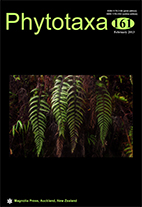Abstract
Chromosome numbers and reproductive biology of nine species of the fern genus Hypodematium (Hypodematiaceae) from China were investigated. The chromosome numbers of eight species are reported here for the first time: H. daochengensis n=41 (41 II); H. fordii n=40 (40 II), n=80 (40 II+40 I), 2n=120; H. glanduloso-pilosum n=41 (41 II), 2n=82, 2n=123; H. gracile n=41 (41 II); H. hirsutum n= 41 (41 II); H. microleptoides n=41 (41 II); H. sinense n= 40 (40 II) and H. squamuloso-pilosum n=41 (41 II). Two cytotypes, n=82 (41 II+41 I) and 2n=123 in H. crenatum, are reported for the first time. Our results showed that the species with these cytotypes are agamospermous triploids: H. crenatum n = 82 (41 II +41 I), H. glanduloso-pilosum n = 82 (41 II +41 I) and H. fordii n = 80 (40 II +40 I), based on the unequal size and presence of aborted spores in the sporangium, and the allotriploid hybrid chromosomes in the spore mother cell at the diakinesis stage of meiosis I. The remaining species are sexual diploids and tetraploids, based on the chromosome number n = 41 and n =82 at the diakinesis stage of meiosis I of spore mother cells. The relationships among habitat preferences, frond hairs and reproductive modes in Hypodematium are discussed and illustrated. It appears that plants with large fronds and sparse, thin hairs, living in humid and shady places undergo sexual reproduction, while small plants living in sunny and dry conditions with thick hairs undergo agamospermous reproduction. The distribution pattern and basic chromosome number all indicated the basic chromosome number x= 41 was plesiomorphic, whereas x=40 was apomorphic. Chromosome aneuploid changes occurred in this genus. The distribution of the sexual diploids and tetraploids and agamospermous triploids suggests that the genus might have originated in the Himalayas and dispersed from there to northeast Asia and Japan.

